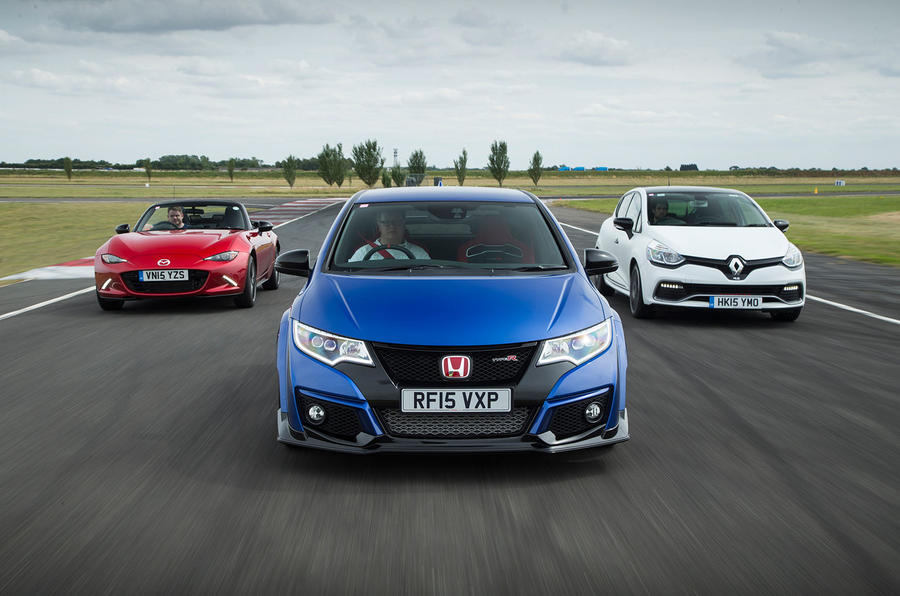And so to what is, on the face of it, a more challenging verdict at which to arrive.
Pitching one hot hatchback against another seems easy enough: you assess them both as hatchbacks and both as hot things, and then reach a pretty clearly defined decision. But how do you decide between a two-seat, lightweight roadster and a five-seat, five-door hatch?
Actually, it’s simple enough: we do it every autumn at our Britain’s Best Driver’s Car contest (Handling Day proper, as we know it), and the rationale by which we judge each car is straightforward. The thinking goes like this: if you had only one spudder to take you to the supermarket or the station when you needed it, which car would you take away from Handling Day for a year, knowing it’d entertain you more than any other in this contest’s line-up?
On Handling Day, it’s not always the fastest, most exciting or most powerful car that wins. All cars have suspension and steering (until cars that drive themselves turn up, anyway) and it is not necessarily more difficult to tune that on an affordable car than it is on an expensive one. Which is how some saloons have ended up comfortably mid-order while exotica have languished near the back. And how the £25k Toyota GT86 beat everything including £100k track-focused supercars a few years ago. Much the same criteria applies here.
First up, then, here is a car that has already beaten the GT86 in this contest. I’m a bigger fan than most people of the Toyota – and it has a lot of fans at Autocar – but I’ve no beef with that result. Everything I like about the GT86 is distilled and refined in the Mazda MX-5. Lightness, for example: the Toyota is a 1275kg car (even less than that when we road tested it), which is precious little for a near four-seat coupé.
But shorn of the need to carry two of those occupants and their trappings, the Mazda, despite having to be rigid enough to contain a folding top – an easily stowed piece of canvas genius of which Cotswold Outdoors would be proud – is 153kg lighter again.
Understandably, neither of the other two finalists can quite match that weight figure, and it’s no surprise that the smaller Renault is the closer of the two. At 1204kg, the Clio is only 82kg heavier than the Mazda MX-5, which ain’t bad given that it’s a five-door hatch, its four-cylinder engine wears a turbocharger and it has two clutches in its automated gearbox.
For those of us who are used to the way Renaultsport does things with the Mégane – by which I mean deathly seriously – the latest Clio was a peculiar diversion. Somehow it was just too… easy.
A lightweight in the metaphorical, bad sense of the word. The 220 Trophy rights so many of those wrongs, and it isn’t just the additional 20bhp. It’s tighter, keener, more composed and a bucket-load more engaging.










































Join the debate
Add your comment
Predictable result.
But what is the point in having a subscription if this and most or all road tests appear on the site?